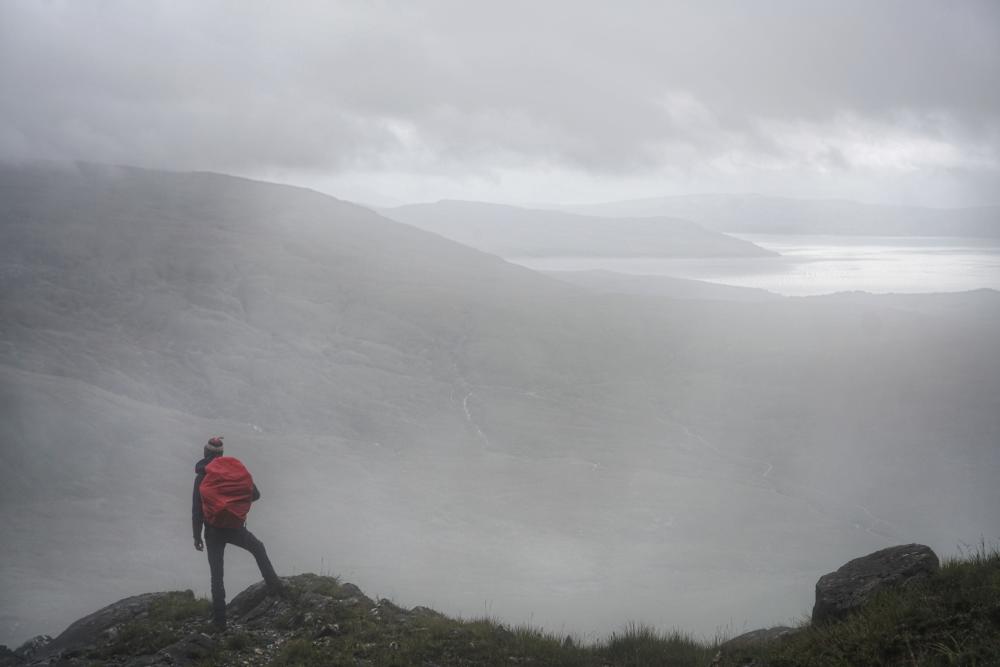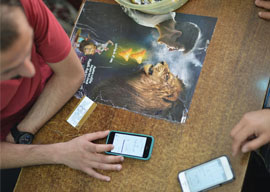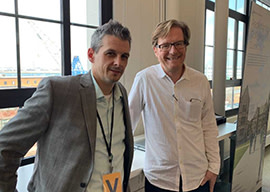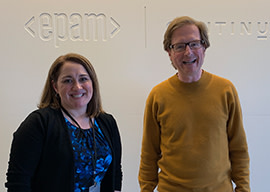
1.
Innovation feels risky at the best of times. But when the world itself grows increasingly uncertain—as it’s doing right now—this amplifies and complicates our clients’ sense of discomfort. For them, it’s like driving into a fog. They’re speeding into unknown territory and feel the need to pump the brakes. But is that actually safer in the long run?
We know that feeling, and we know how important it is to overcome it. As innovation consultants, we experience uncertainty all the time. In a way, it’s become our medium. Like weird fog monsters, we adapt to uncertainty, speed confidently into the unknown, and return clutching a map of the road ahead.
That confidence comes from experience, from trusting a process and an approach that has worked countless times before. Once that’s achieved, we actually relish the foggy problems and come to view them as the best kinds to solve. In this context, the phrase “whitespace innovation” makes enormous sense.
2.
Everyone’s creativity and resourcefulness are being tested right now. For us, it’s a new challenge to have deep conversations with customers in the remote present. Previously, we could visit people, observe them in their own context, and engage all our senses to learn about them in four or five different ways at once. That's been taken away from us for now. But the fog-work of consulting has always required flexibility. Over the years we’ve pioneered different ways to capture the same information.
Like weird fog monsters, we to adapt to uncertainty, speed confidently into the unknown, and return clutching a map of the road ahead.
We already use visual tools to understand people's feelings, values, and aspirations. We ask somebody, “What does wellness mean to you?” and often just get a blank stare. But if we give that same person a set of images and ask, “Which one of these pictures best represents wellness to you?” we can start to unlock their thinking. It provides a launchpad for conversation based on their personal perception and interpretation of the images we’ve shown—and we go from there.
But how do we start this kind of conversation remotely? We MacGyver together different tools. We get people on a Skype call and open up real-time collaboration tools—Google Slides preloaded with some relevant imagery, say—and have them sort digital “cards” right in front of our eyes, as though we were sitting at a coffee table together. It works surprisingly well.
Remote human-centered research requires understanding our key learning goals, then adapting to the constraints of our remote moment so that the right tool still captures that same value.
3.
Another challenge that’s giving us an opportunity to push our process: We’re building a physical product that we'll need to test with people very soon. It's not enough just to show somebody a picture to get a sense of whether that product is appropriate for their life. This learning has to show us how a product fits into people’s physical reality: how they hold it in their hands, how it works in their environment, even how it interacts with other objects and spaces.
We have every reason to believe we won’t be able to go inside people's homes and they probably won’t be able to visit our studio in the foreseeable future.
Instead, we’ll drive the product to people's houses—ensuring that it’s completely sterilized, of course—and leave it on their doorstep. We’ll then initiate a video call so that we can be there from the first moment and watch them unbox it. We’ll actually see where the product fits in their houses. It's one thing to ask someone, “Where would you keep this item?” It's quite another to say, “Okay, now that you've unboxed it, where does it go? Is this a bathroom thing? Is this a kitchen thing? Does it go on your counter? the cupboard? How does this thing live in your life?”
It's one thing to ask someone, “Where would you keep this item?” It's quite another to say, “Okay, now that you've unboxed it, where does it go?”
We can actually be there, in telepresence, for that moment. When they're finished, it's a matter of sanitizing it and going on to the next house. There's more coordination than there would have been before, more to orchestrate, a few more moving parts; but there are legitimate benefits as well.
4.
What are the benefits to working in this new world?
For one, research subjects are more available than they ever were before, because so many people find themselves at home and looking for ways to spend their time.
Another benefit: We can now bring along as many client team members as we want. Back in the face-to-face era, we had to limit the number of people in our ethnographic interviews. We didn't want to overwhelm subjects in their living rooms—45 people crammed into a house wouldn’t have yielded good results—so we always kept it to a manageable number, three to four people. This limited how much our large client teams could watch and react in real time. Now, it's really just a matter of sending a conference link to a lot of people (and ensuring that their mics stay muted!).
Going digital also means that we’re less limited, geographically. In the past, travel limited teams to two to three areas for research. “Do we want to get a bi-coastal view of this phenomenon?” we’d ask. Or: “Do we want to have Red States and Blue States represented so that we know that our biases are being checked by people on the opposite side of the culture war?” Without travel budgets and time constraints, remote learning gives us more room to roam.
5.
On the one hand, our universally remote moment has made life stressful and really connecting with people more challenging than ever. But the Global Village has also opened itself up like never before exactly because right now we’re all valuing connection more than ever.
Our work is about seeking and meeting challenges in their foggiest haunts. Which is why, right now, we’re rallying—and bringing our clients with us. The idea of getting to reinvent portions of our process and experiment with new ways of learning is exciting. It’s what we do best. It’s been rejuvenating.





